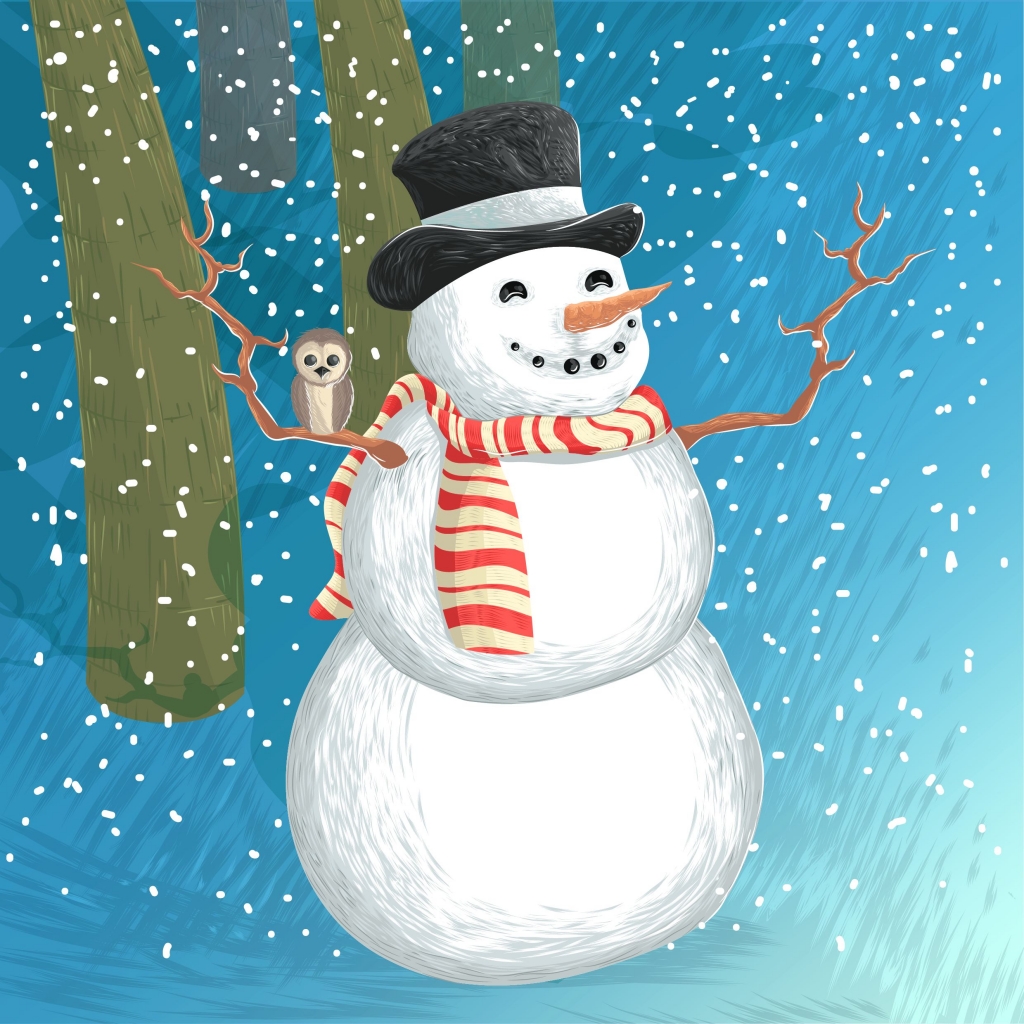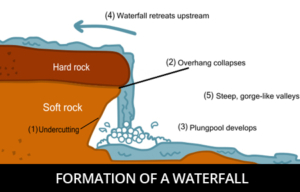Waterfalls – Fun Facts For Kids
You’ve probably at least seen a picture of a beautiful, majestic waterfall before, but how much do you know about these natural wonders?
Did you know there are many different types of waterfalls? Or that daredevils have gone over waterfalls inside of barrels throughout history? Keep reading to learn more!

What is a waterfall?
A waterfall is part of a river or other body of water that takes a steep drop over a rocky ledge or cliff. The water lands in a plunge pool, which is a deep pool of water found beneath waterfalls.
How are waterfalls formed?
Most waterfalls are formed from a process called erosion, when natural forces like water or wind wear away the earth over time.
As a stream flows, it carries sediment along with it. Sediment is usually made up of sand, dirt, pebbles, and pieces of larger rocks.

The sediment rubs along the stream bed, which is made of both soft rock and hard rock, and wears it away over time.
The soft rock, like limestone or sandstone, erodes much more quickly, leaving only hard rock like granite. The granite that remains when the soft rock is worn away creates cliffs and ledges. Now you have a waterfall!
Waterfalls don’t only form from erosion. They can also form because of earthquakes, landslides, volcanoes, or glaciers. Sometimes waterfalls form across cracks in the Earth’s surface called faults.
How are waterfalls classified?
Scientists classify waterfalls in a few different ways. Some classify waterfalls based on volume. Others use width to classify waterfalls, and some use height.
One of the most popular ways to classify waterfalls is by type, which is based on the way the water flows or descends.

Here are several types of waterfalls:
A ledge waterfall is the classic waterfall, the curtain of water you picture in your mind when you hear the word “waterfall.” It only partially touches the bedrock as it falls.
Fan waterfalls create a fan shape because the water spreads out horizontally as it descends.

A cascade is a waterfall that descends over rocks that look like steps. These waterfalls aren’t as steep or dangerous as most others, and they are usually safe to play in.
On the other hand, a cataract is a big, powerful, and dangerous waterfall that is definitely not a good location for playtime.
Punchbowl waterfalls are named for the extremely wide plunge pools at the bottom.
Multi-step waterfalls are connected waterfalls that each have their own plunge pool.

A chute is a very narrow waterfall that forces water through at extra high pressures.
A block waterfall flows from a very wide stream.
A slide is a waterfall that flows over a low angle slope.
Plunge waterfalls are named because they plunge quickly over the ledge, not even touching the hard rock.
Did you know there were so many different types of waterfalls?
Quick Waterfall Facts
The roar from Victoria Falls in Zimbabwe is so loud that it can be heard from 25 miles (40 kilometers) away!

Angel Falls, located in Venezuela, is the world’s longest waterfall at 3,212 feet (979 meters). It is so long that the water usually turns to mist before it reaches the bottom.
Some waterfalls freeze for at least part of the year. Mountaineers (people who climb mountains) actually climb these frozen waterfalls to practice and test their skills.
The Fang in Vail, Colorado, is a frozen waterfall that descends more than 100 feet (30 meters). That would be hard to climb!
Waterfalls can be used to create hydroelectric power to provide electricity to homes and businesses.
No two waterfalls are exactly the same, just like snowflakes and fingerprints!
People have gone over Niagara Falls in barrels throughout history. There is even a Daredevil Exhibit documenting these crazy stunts with a collection of the actual barrels that were used.
On October 24, 1901, a woman named Annie Taylor was the first to successfully go over Niagara Falls in a barrel.

Waterfalls look pretty, but they are also fascinating forces of nature, sources of hydroelectric power, and sites of wild daredevilry!



